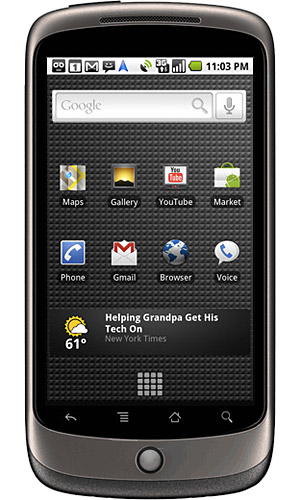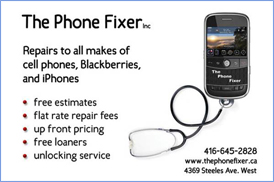Nexus One Display Woes Crop Up Again
First there were screen cracks, then there was the purple tint, and now, according to Luke Hutchison, PhD candidate at MIT’s Computer Science and Artificial Intelligence Laboratory, lower effective screen resolution than the 480×800 advertised. The Nexus One is a gorgeous phone, sure, but it’s had its fair share of issues since its debut in January.
Gleaned from a 3-page, highly-technical spread in Ars Technica, the Nexus One, due to the way the AMOLED screens display pixels, they are not able to reproduce all three colours on a single pixel at the same time. As a result, the actual pixel number is quite a lot smaller, 392×653. Hutchison:
This final result of 392×653 in some sense describes the total effective addressable spatial resolution of the display, again sans signal processing. Conceptually—though this is not how the screen mapping is performed internally—you could think about this display as taking the 480×800 input image and scaling it down to 392×653 image, using subpixel positioning to reduce the apparent blurriness as much as possible.
I own a Nexus One, and I can tell you, the screen has more pixels than the iPhone. That is just the case. The pixel density is far greater, and there is more information, and clearer images, displayed on the screen. But I agree, since I have also owned a Milestone which has a similar-resolution screen to the N1, that text on the former’s screen (and therefore the Droid’s) is far sharper and more nuanced. Hutchison again:
The Droid’s screen is dimmer and more washed-out than the N1′s screen, but text is significantly sharper, to the point that the pixels on the Droid’s screen are almost impossible to discern. I would trade resolution for some loss of color quality any day, because I look at a lot more text than photos on my phone. The fuzziness of text on the N1′s display is visually distracting (at least to me), and it makes the screen much less functional when viewing zoomed-out webpages. It’s also harder on the eye to read on the N1′s screen, because when your eye sees something that looks fuzzy, it constantly tries harder to focus on it.
There is a lot to love about the Nexus One, but its screen seems to be a continuing liability. Maybe, in future iterations, they can change the manufacturer. But this also points to a limitation with AMOLED technology: the inherent increased brightness of the display comes with it, at least for the moment, in the infancy of the technology, some severe drawbacks.
I will be following up on this, mostly because I have a personal interest in the resolution of this matter. I am not putting my N1 on the selling block just yet, but I am certainly disappointed in the screen, and have been since I bought it.
Check out the full article at Ars Technica, and let us know if you’ve had any issues with your Nexus One screen in the comments.
-
http://www.ubervu.com/conversations/thecellularguru.com/blog/2010/03/25/nexus-one-display-woes-crop-up-again/ uberVU - social comments










